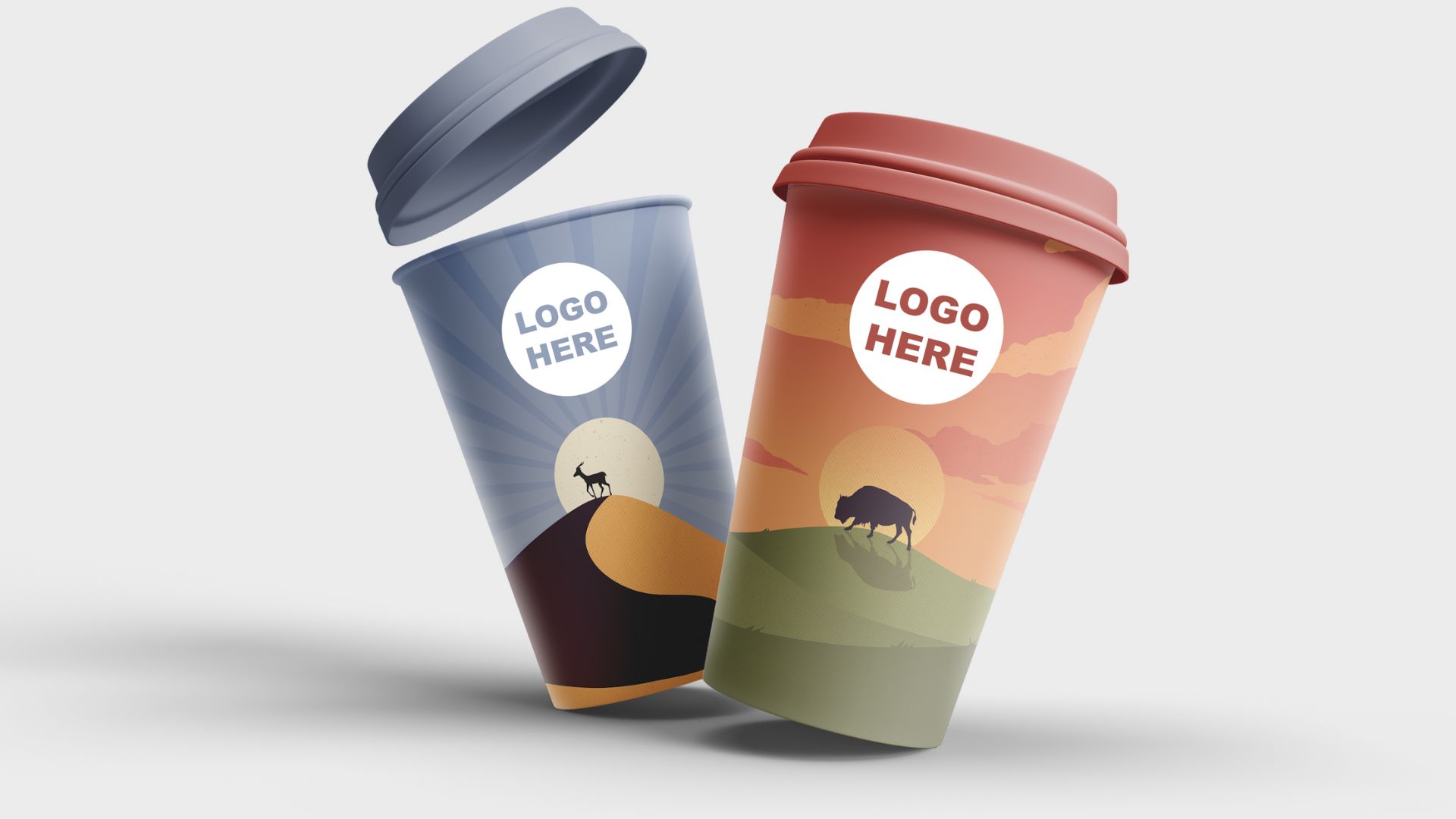CSUMB, United Arab Emirates students collaborate on design project

January 11, 2023
By Marielle Argueza
Printed on the surface of one Starbucks coffee bean bag is, a minimal in design colored in soft pastels depicting the classic arch of the iconic Bixby Canyon Bridge in Big Sur. On another bag isthe ultra futuristic Sheikh Zayed Bridge of the United Arab Emirates. In another similarly-colored design, two Starbucks tumblers mirrored each other: one showed a desert-dwelling gazelle against the backdrop of white moon and the sloping deserts of the UAE; the other represented an American Bison grazing int the vastness of a prairie during a sunrise.
The designs could seamlessly blend into any shelf of a Starbucks in the United States or UAE, but they weren’t made by the company. They were made by the students of CSU Monterey Bay’s CST345 Visual Thinking class as a part of their Starbucks Cross-Culture Collaboration Design Project.
The class was led by assistant professor and Graphic Design / Communication Design program coordinator, Amir Attia. Leveraging his academic relationships, the roughly five-week project was done in concert with Associate Professor Basma Fouda and her students of Abu Dhabi’s Higher Colleges of Technology (HCT).
Three or so CSUMB students partnered with one or two students from HCT, at first introducing themselves with icebreakers and sharing collages that represented their respective cultures and identities. From there, they were given their objective: to use their design skills to create graphics for the most recognizable coffee brand in the world, Starbucks.
The company has over 300,000 stores in 83 countries. Since transitioning into a global franchise, they are well-known not just for their coffee, but for their location-specific designs, which have a kind of cult following. Be it mugs or tumblers, lots of country-specific features such as Seattle’s Space Needle to Japan’s Mount Fuji have been graphically represented year after year in Starbucks merchandise.
Global branding aside, the idea behind the project was very much in spirit of CSUMB’s mission: cultivating diverse perspectives and applying it to the world over.
First their students did market research, just as any graphic design and marketing company would do. They compared global competitors that were present in both countries like Dunkin’ Donuts, Pete’s and Tim Horton’s. Then much like the ice breaker, they began cultural research, finding symbols, patterns and places that would be instantly recognizable.
They received feedback from their professors, and tailored their designs accordingly. At the very end, CSUMB students gave an in-class presentation on their final designs, while HCT students had their designs displayed in an exhibition in which they presented on the process and cross-cultural exchange. The virtual event at HCT was hosted by the Education & Exchanges department of the U.S. Embassy.
The project wasn’t without its difficulties. Gabby Lazarcheff, a third-year Communications and Design major, said her team’s biggest struggle was navigating the 12-hour time difference. “Most of the communication was by email,” she said. “And it was always weird to have to just wait for a response. I think overall we probably communicated five times, meeting once on video.”
For Emma Alexander, a fourth-year Communications and Design Major, her team’s biggest challenge was navigating cultural research independently. “We were left to do our own research in that region, which can obviously be very challenging. I think there were points where we would have liked more feedback, like ‘oh, we found this, but is this true to your experience?’” said Alexander.
But both Lazarcheff and Alexander both learned a great deal from the cross-cultural project. For Lazarcheff, she wasn’t only excited to use the design principals and skills she learned at CSUMB, but to collaborate with someone outside of the campus.
“A lot of our projects are small-scale in class. Your perspectives are really shaped just by the students on campus. But it was really fun to use this modern technology that we all have to collaborate with a school on the other side of the world.”
As for Alexander, it greatly expanded her view in cultural perspective and design. “I think a lot of people in design think that good design is universal, but that’s really not the case. I learned that culture really does define design.”